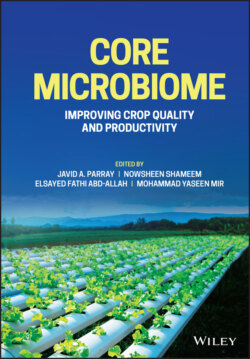Читать книгу Core Microbiome - Группа авторов - Страница 64
4.2.5 Compost in Horticulture as the Supply of Minerals to Crops and Other Plants
ОглавлениеCompost application is beneficial in horticulture as an effective means of recycling; it also minimizes the use of chemicals and harmful fertilizers. Compost has been trialed for the grapevine (Powell et al. 2007). Based on the benefits of compost, it can enhance water absorption and minimize the need for irrigation. Compost is also an exciting peat substitute. Compost added to soil has improved the biomass of crops and has increased N, P, and K uptake (Miller et al. 2015). There is a report on a significant increase in the growth and biomass of Anemone coronaria L. cv. Red meron (Aydinsakir et al. 2009).
When compost nitrogen is used in the soil, organic nitrogen is converted to readily available nitrate–nitrogen for growing plants and microbes as well. Compost usually contributes 10–15 kg of nitrogen per 10 cubic meters applied per crop. This nitrogen from the compost helps plants grow. High NH3 emission is due to NH4+–N content in the compost (Nicholson et al. 2017). Nitrogen emissions from green and food compost are relatively more minor, and they can be used to build nitrogen reserves and improve soil condition (Nicholson et al. 2017). The study’s findings have revealed around a 30% reduction of N2O emission due to manure compost in andosol soil (Mukumbuta et al. 2017).
Phosphorus is a crucial central element for plant growth. Compost usually provides 6–8 kg of plant-available phosphorus, which is around 65–90 kg super-phosphate. Compost use increases soil phosphorus supply by releasing inorganic phosphorus through the mineralization of organic phosphorus (Wang et al. 2010).
Compost normally contains 0.8–1.2% potassium. Therefore, with 1.0% (w/w) potassium content, 10 m3 of mature compost will contain 40 kg of potassium, providing 36 kg of plant-available potassium, equivalent to 90 kg of potassium sulfate. When applied to soil, municipal waste compost increased the amount of nitrogen, phosphorus, and potassium available for plants (Soheil et al. 2012). Compost-amended soils contain nutrients (macro and micronutrients) for plant growth (Brown and Cotton 2011).
Compost is used in orchards and vineyards. There has been a report on improved growth and yield of citrus, avocado, apples, and table and wine grapes due to the application of compost during planting (Buckerfield and Webster 2003). The application of compost and compost mulches in fruit and vineyards can be advantageous when growing conditions are less stringent; soils are more impoverished, especially when less water is available. Thus, compost can be used to increase uniformity and, hence, enrich the entire orchard and vineyard.
Adding compost to vegetable cultivation has reduced the use of chemicals and harmful pesticides by 80%. It has also minimized the detrimental effects of intensive cropping on soil performance and quality of water. Compost also increased the ability to hold cations, viz., potassium due to which there was a 20% reduction in the requirement of potassium for vegetable crops.
Compost has improved the yield of lettuce, carrot, broccoli, etc. There is a report on the increase in red pepper yield due to compost application (Park et al. 2018). The soil mixed with 25% compost showed an increase in the yield of cabbage and onion (Smith et al. 1992). Increased growth on the use of compost as fertilizer has been reported on onion and lettuce (Brechin and McDonald 1994), tomatoes (Manios and Kapetanios 1992), barley (Hountin et al. 1995), and rice (Charfen 1981).
